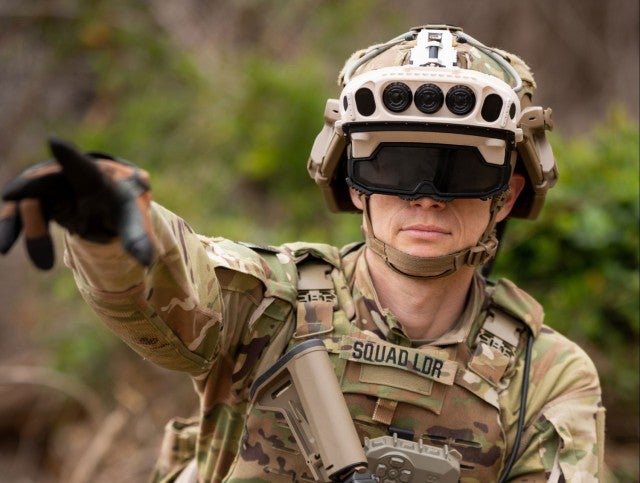
The Army plans to field around 3,000 of the service’s digital headsets to close combat forces this year for testing and evaluation with infantry soldiers, hoping soldiers will like them better than the previous version.
Soldiers said a 2022 version of the “mixed reality” headset gave them, strained their necks and made them shoot worse.
The Integrated Visual Augmentation Systems, or IVAS, aims to increase soldiers’ battlefield awareness, improve sensing, rapid decision making, target acquisition and engagement in a single platform, according to the Army’s Program Executive Office Soldier.
The Army, which released its Fiscal Year 2025 budget request Monday, is asking Congress for $256 million to buy Integrated Visual Augmentation Systems and $98 million for its research and development. The Army’s plan is to field 3,162 systems for Initial Operational Test & Evaluation to combat units this year.
Subscribe to Task & Purpose today. Get the latest military news and culture in your inbox daily.
The next generation for IVAS still needs to go through ”a lot of testing” before the Army has a combat-capable version, Army Under Secretary Gabe Camarillo said Friday at a briefing with reporters ahead of the budget release. The funding amount that the Army is requesting is “based on our hope for success there,” he added.
The Fiscal Year 2025 investment is tied to IVAS 1.2, latest variant of othe headsets, which “will include a new form factor to address Human Systems Integration, including physiological impacts identified during testing, and a lower profile heads-up display with distributed counterweight for improved user interface and comfort,” according to an Army release.
The first iteration of IVAS was subjected to an operational demonstration in 2022 “to support a production and rapid fielding decision,” according to a Pentagon assessment of its weapons systems. The demo found that IVAS actually made soldiers less lethal, causing physical impairments to soldiers like disorientation, dizziness, eyestrain, headaches, motion sickness and nausea, neck strain and tunnel vision.
“Soldiers hit fewer targets and engaged targets more slowly with IVAS 1.0 than with their current equipment on the buddy team live fire range,” according to the assessment.
The Army’s 2025 request also includes approximately $100 million for Enhanced Night Vision Goggle-Binoculars which Task & Purpose tried out in May 2021.
The binoculars are right out of an RPG video game with a compass in the upper part of the screen to show the user where they’re heading, and a ring at the bottom that displays where the enemy or teammates are in relation to you from the Android Tactical Assault Kit (ATAK). ATAK uses augmented reality to overlay map graphics and blue force tracking capabilities.
